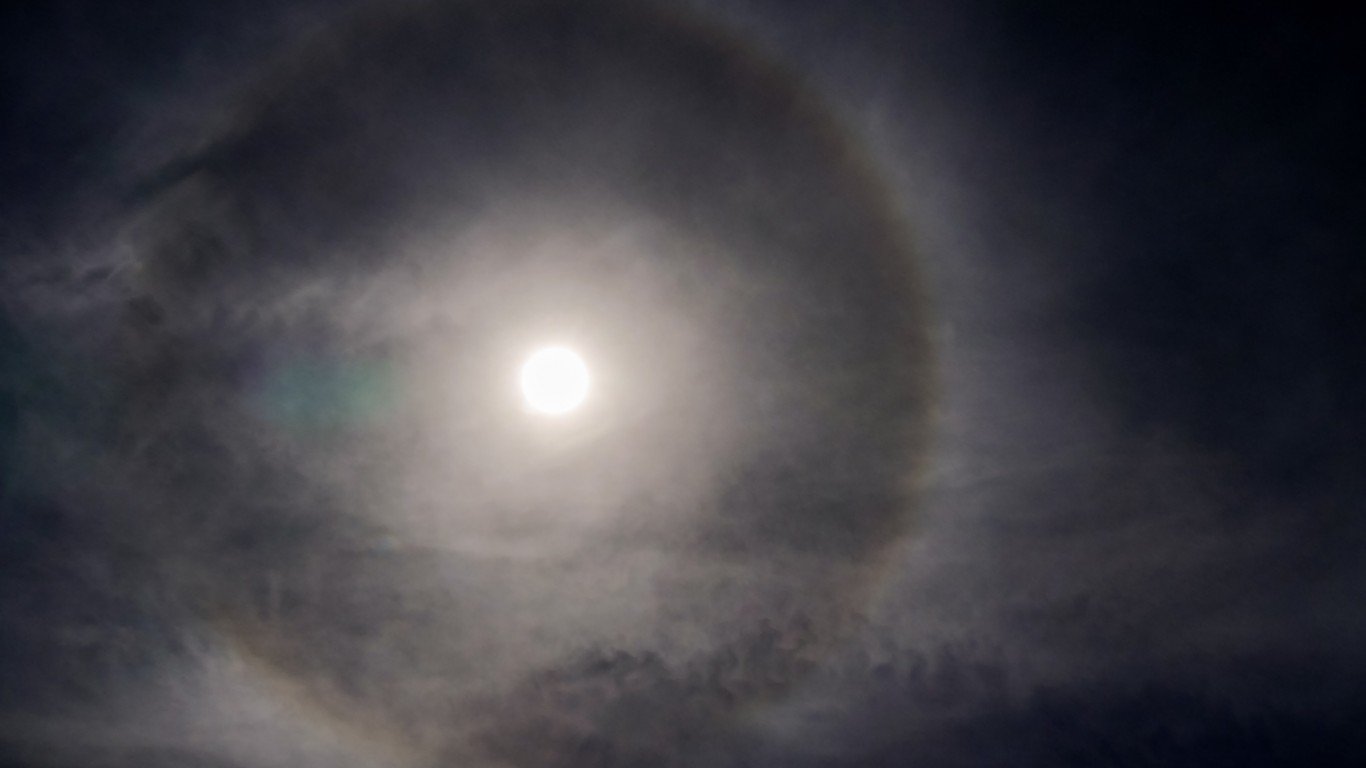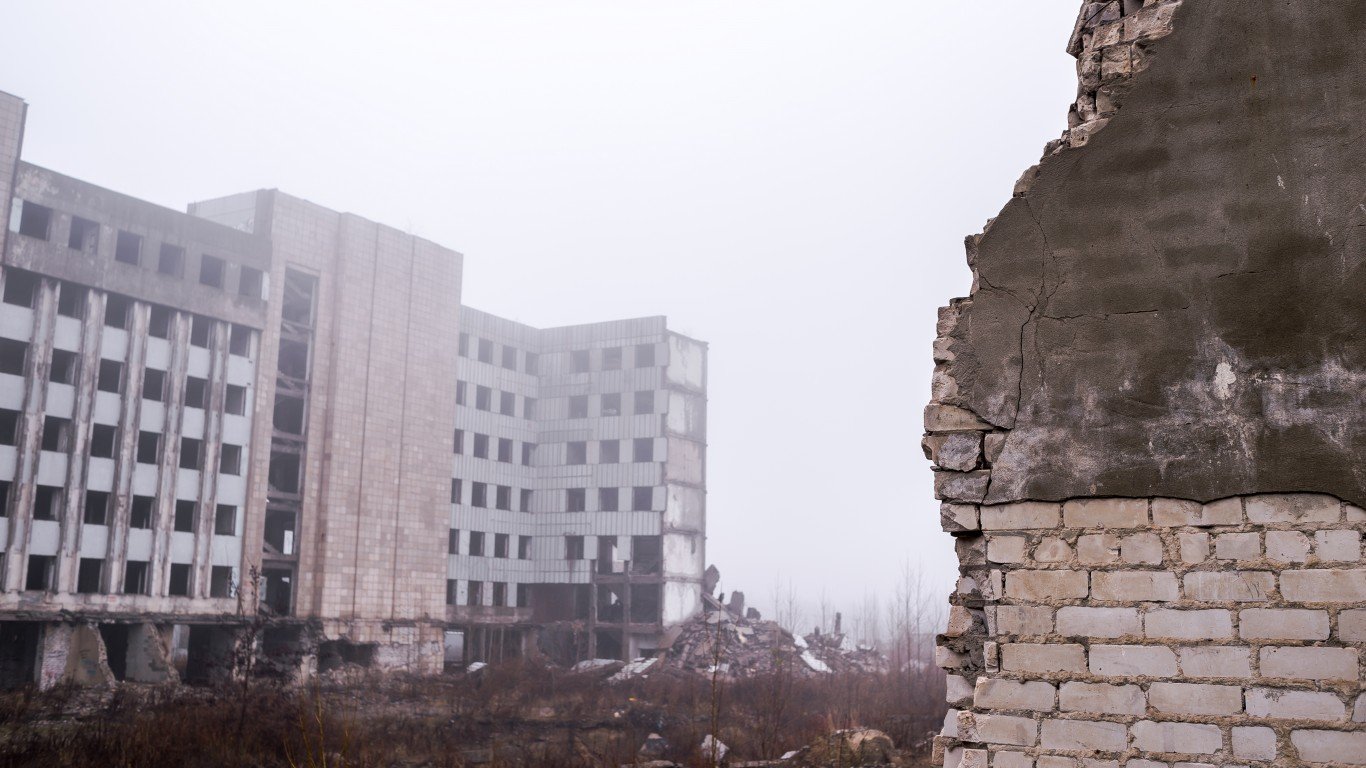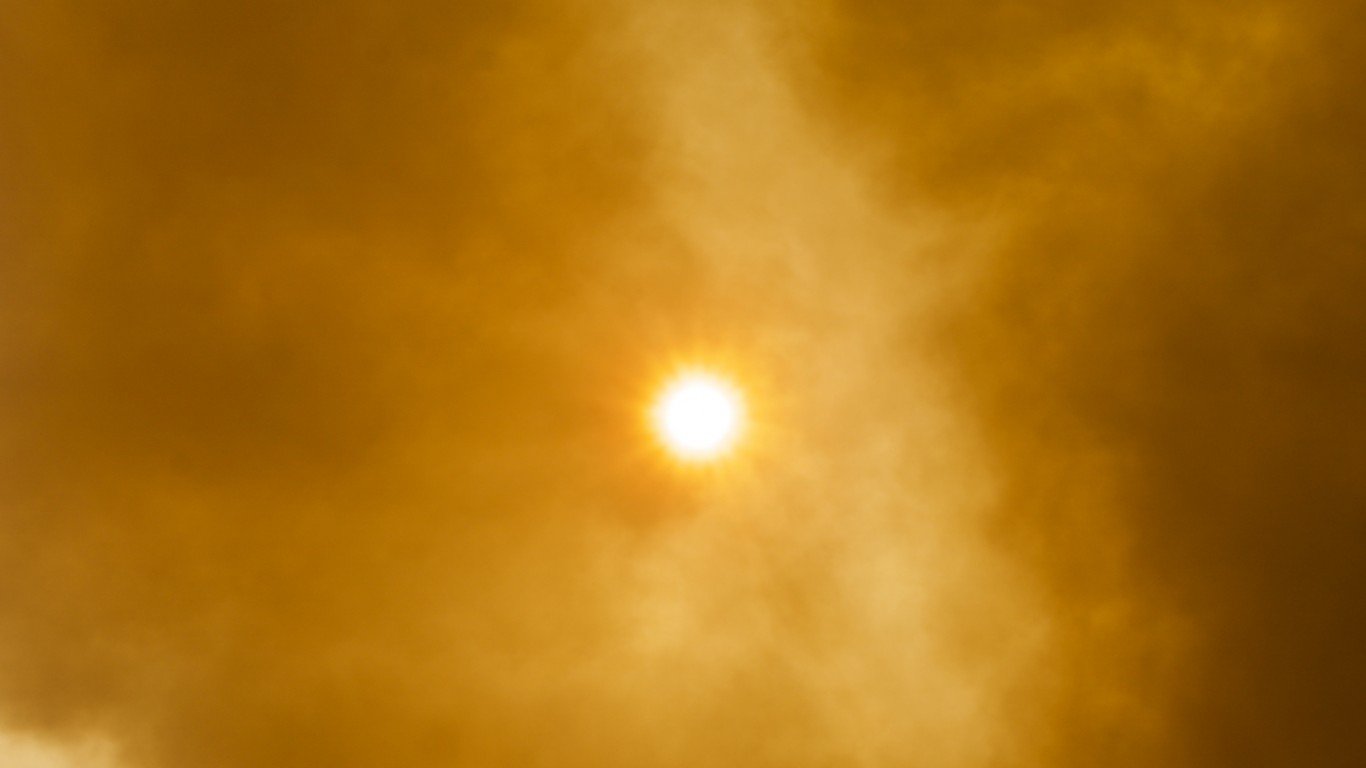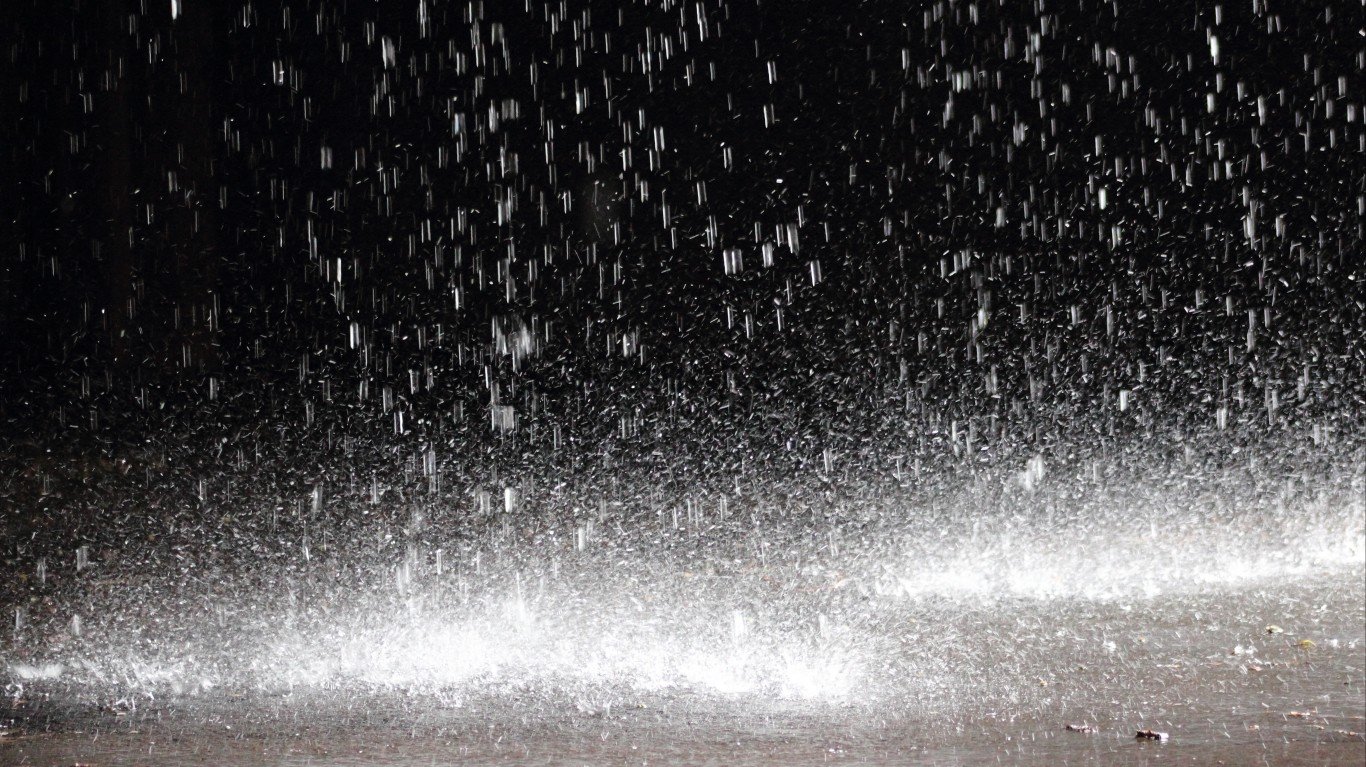
18. Black carbon and precipitation
If black carbon stays in the troposphere it can trigger precipitation. When it is in the stratosphere, black carbon stays there for years, leading to global climate response. Without precipitation as a removal mechanism, aerosols can remain in the stratosphere for months to years depending on particle size.

17. Northern Hemisphere soot
After a nuclear exchange, almost the entire Northern Hemisphere would be engulfed in stratospheric soot within the first week.

16. Southern Hemisphere soot
Two weeks after a nuclear conflict, soot would have traveled to the Southern Hemisphere.

15. Reduced sunlight
Sunlight would be reduced by as much as 90% in some areas after a nuclear war.

14. Acid rain
According to some studies, up to 25% of smoky soot would fall back to Earth in a heavy black and acidic rain.





